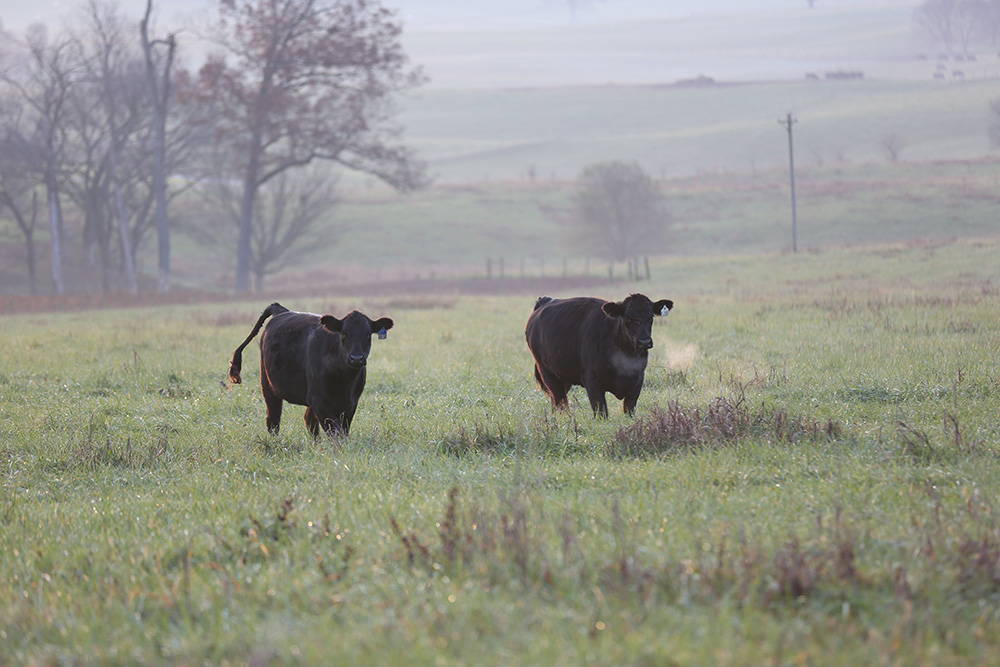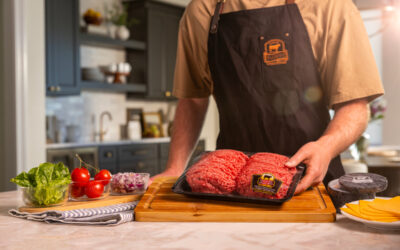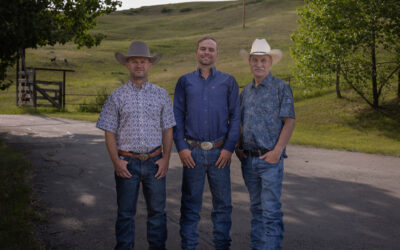
Market development, selection tools boon for Canadian beef
by Steve Suther
Cow-calf ranchers can’t control weather and markets, but price signals guide something that can be controlled: herd genetics.
Larry Corah, Certified Angus Beef ® brand vice president, told a group of Saskatchewan producers in May about the history of markets signaling with more dollars for higher quality beef. He said selection and management can help any producer get in on those dollars.
“Premiums are the first benefit of quality cattle,” he said, noting that U.S. data shows a $35 to $50 per-head advantage in value for cattle that qualify for CAB vs. those lower Choice (AAA in Canada) that do not meet CAB quality specifications. Select, or AA grade cattle give up $50 to $80 per head compared CAB qualifiers, but cattle making CAB Prime are worth as much as $200 per head more than lower AAA.
Years of focused marketing has trained thousands of brand partners and developed increasing demand around the world. Marketing is the key to bringing those higher values back to the ranch, Corah said. “Producers, feedlots, packers, retail, restaurants–we’re all part of the production chain. We have to build networks and work together to pull in these extra dollars at every level.”
It is easy to see the value of quality in premiums, but higher quality cattle are often more efficient, too. An analysis of data on more than 440,000 steers across feedlots in several U.S. states showed pens of high-quality cattle have greater average daily gains and total gains on a finishing ration than pens of low-and middle-quality cattle. Bottom line, the high-quality steers earned $11 to $17 per head more profit than the other two quality levels.

“We sell everything based on dollars per pound, so for many producers, pounds reign supreme,” Corah said. “But the point is, you can have quality and pounds. The two go hand in hand.”
Unlike premiums and feed costs, customer satisfaction does not directly translate into dollars and cents, but ultimately, it underwrites cattle prices.
Because beef is a more expensive protein, consumers have to want it and believe it is worth more or they will switch to a cheaper alternative. “Right now consumers are driving the demand to get an extremely high-quality beef eating experience, and they are willing to pay for it,” Corah said.
This demand has created a ready-made market opportunity. Last year CAB brand grocers and restaurants sold 32 million pounds of the beef in Canada, but only half of it originated there.
Producers can take advantage of this opportunity by using selection tools, data and communication, Corah said. Expected progeny differences (EPDs) can help in selecting bulls to create cattle that satisfy the high-quality demand, and feedyards can share performance data back to the ranch. At every level, those registered with the new BIXS program (www.bixs.cattle.ca) can find individual carcass values as well, he noted.

Earlier this year, CAB added another tool to the box for anyone who wants to know more about potential for gain and grade. Marbling (intramuscular fat) is the key factor in high-grading beef, and it’s also a highly heritable trait, Corah said. GeneMax™ (GMX) is a new DNA test for high-percentage Angus cattle to rank genomic marbling and post-weaning growth potential.
At $17 per head, it may be the most affordable option for such testing, available through http://www.cabpartners.com/genemax/index.php. In less than four weeks, producers can have results that take much of the guesswork out of marketing options. Moreover, applying the technology to heifer selection can make for faster genetic improvement in a beef-cow herd.
“There is a market out here for a higher quality product for anyone who can deliver it; the challenge is to focus on the right genetics to get that done,” Corah said. “With the cattle you have now and the genetic tools available to improve, Canadian cattlemen are in a prime position to fill the demand.”
You may also like
Success, Despite Challenges
Today’s market is complex and competitive. The collective effort of stakeholders across the supply chain positions Certified Angus Beef to meet the record demand for premium beef moving forward. Signals across the beef industry are clear and Angus farmers and ranchers seeking high-quality genetics that deliver premium beef are producing a product in high demand.
Double Down on Angus
South of Calgary, Alberta, brothers Austin and Malcolm Cross carry on a century-old family history. Their great-great-grandfather staked his future on this land. Today, the Cross brothers are building one of their own—with Angus cattle that not only perform in the harsh environment but consistently meet the highest standards for beef quality.
CAB Sets Sales Records, Sees Historically High Brand Acceptance Rates
In an otherwise tough time in the beef business, sales and supply records have been a bright spot. The positive numbers mean that quality beef production has not let up, and beef demand is holding. Consumers have proven the value proposition: the good stuff is worth a little more money, for a better eating experience.



